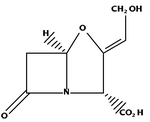Definition
When an animal bites, it can transmit bacteria from its mouth into the wound. These bacteria may grow within the wound and cause an infection. The consequences of infection range from mild discomfort to life-threatening complications.
Description
Over one million Americans are bitten by animals annually. Eighty percent of these bites are minor, but the remaining 20% are serious enough to require medical attention. Animal bites account for about 1% of emergency room visits, and 1-2% of these patients are hospitalized.
Dog bites make up 80-85% of all reported incidents. Cats account for about 10% of reported bites, and other animals (including rodents, rabbits, horses, raccoons, bats, skunks, and monkeys) make up the remaining 5-10%. Cat bites become infected more frequently than dog bites. A dog's mouth is rich in bacteria, but only 15-20% of dog bites become infected. In contrast, approximately 30-50% of cat bites become infected.
The wound type explains the infection rates. Dogs usually inflict crush injuries and lacerations; cats, with their needle-like fangs, typically cause puncture wounds. Puncture wounds appear innocuous on the surface, but the underlying injury goes deep. Cat teeth essentially inject bacteria into the bite, and the deep, narrow wound is difficult to clean. Persons with impaired immunocompetence--for example, individuals with HIV infection--are especially vulnerable to infection.
The bacterial species most commonly found in bite wounds include Pasteurella multocida, Staphylococcus aureus, and Pseudomonas and Streptococcus. P. multocida, the root cause of pasteurellosis, is especially prominent in cat bite infections. Other bacterial diseases from animal bites include salmonellosis, and cat-scratch disease.
Causes & symptoms
The most common sign of infection from an animal bite is inflammation. The skin around the wound is red and feels warm, and the wound may exude pus. Nearby lymph glands may be swollen. Complications can arise if the infection is not treated and allowed to spread into deeper structures or into the bloodstream. If the bite is deep or occurs on the hand or at a joint, complications are more likely.
Live, disease-causing bacteria within the bloodstream and tissues cause complications far from the wound site. Such complications include meningitis, brain abscesses, pneumonia and lung abscesses, and heart infections, among others. These complications can be fatal. Deep bites or bites near joints can damage joints and bones, causing inflammation of the bone and bone marrow or septic arthritis.
Diagnosis
A medical examination involves taking the bite's history and assessing the wound type and damage. Tetanus immunization and general health status are checked. An x ray may be ordered to assess bone damage and to check for foreign objects in the wound. Wound cultures are done for infected bites if the victim is at high risk for complications or if the infection does not respond to treatment. Evaluation of possible exposure to rabies is also important.
Treatment
Treatment depends on the wound type, its site, and risk factors for infection. Bites to the head and face usually receive sutures, as do severe lacerations elsewhere. Puncture wounds are left open. All wounds are cleaned as thoroughly as possible.
If infection occurs, antibiotics are prescribed. Antibiotics may also be used for infection prevention. Since many different bacteria may cause infection, no single antibiotic is always effective. Commonly prescribed antibiotics are penicillin or a combination of amoxicillin and clavulanate potassium.
Prognosis
Once an infection is halted, the bite victim recovers fully.
Prevention
Preventing bites obviously prevents infections. Children under 12 years of age are at a higher risk for bites due to their size and their inexperience with animals; therefore, they should be supervised with animals and taught to act appropriately around them.
Key Terms
- Immunocompetence
- An individual's ability to fight off infection.
- Pasteurellosis
- A bacterial infection caused by . It is characterized by inflammation around the wound site and may be accompanied by bacteria in the bloodstream and infection in tissues and organs.
- Wound culture
- A laboratory procedure in which a fluid sample from a wound or a blood sample is taken from an infected person. The sample is placed in conditions under which bacteria can grow. If bacteria grow, identification tests are done to determine the bacteria species causing the infection.
Further Reading
For Your Information
Books
- Kizer, Kenneth W. "Animal Bites." In Infectious Diseases, 2nd Ed., edited by Sherwood L. Gorbach, John G. Bartlett, and Neil R. Blacklow. Philadelphia: W.B. Saunders, 1998, pp. 1559-63.
Periodicals
- Dumyati, Ghinwa K., Nayef El-Daher, and C. Richard Magnussen. "Animal and Human Bite Wounds: Immunization, Prophylaxis, and Treatment." Consultant 37 (June 1997): 1501.
- Lewis, Katherine T. and Melissa Stiles. "Management of Cat and Dog Bites." American Family Physician 52 (August 1995): 479.
- Presutti, R. John. "Bite Wounds: Early Treatment and Prophylaxis Against Infectious Complications." Postgraduate Medicine 101 (April 1997): 243-54.
Gale Encyclopedia of Medicine. Gale Research, 1999.



